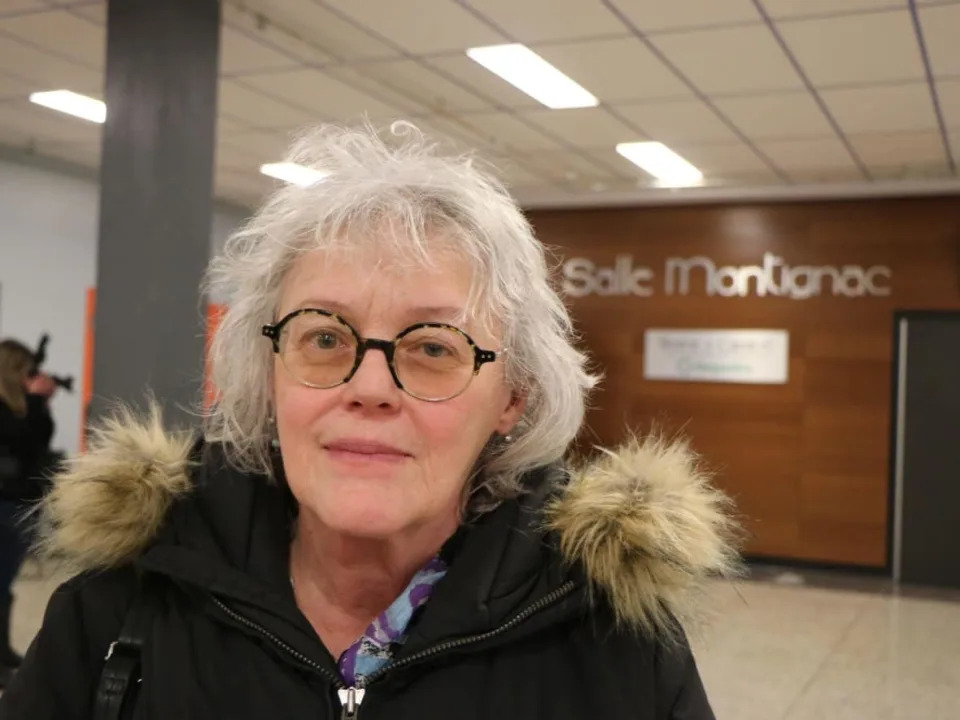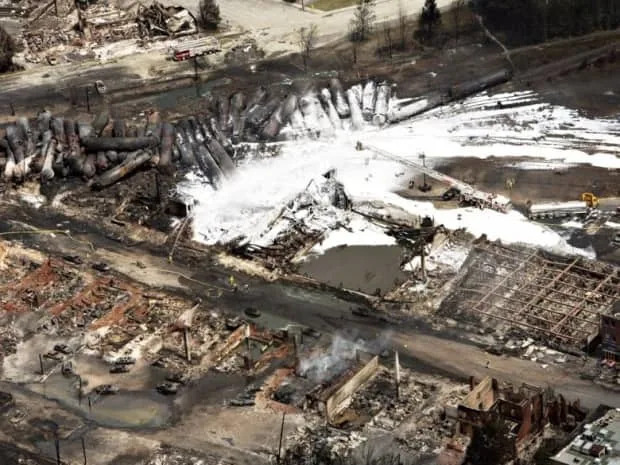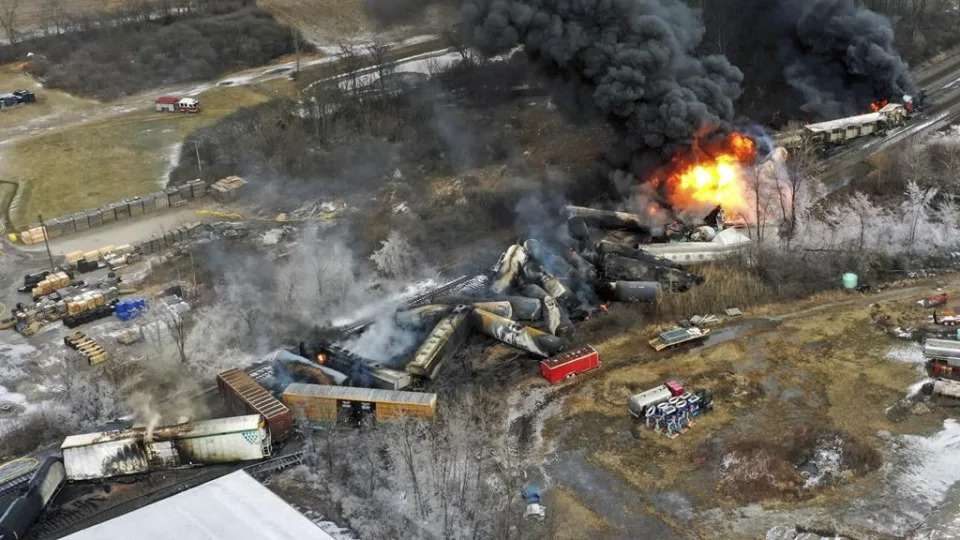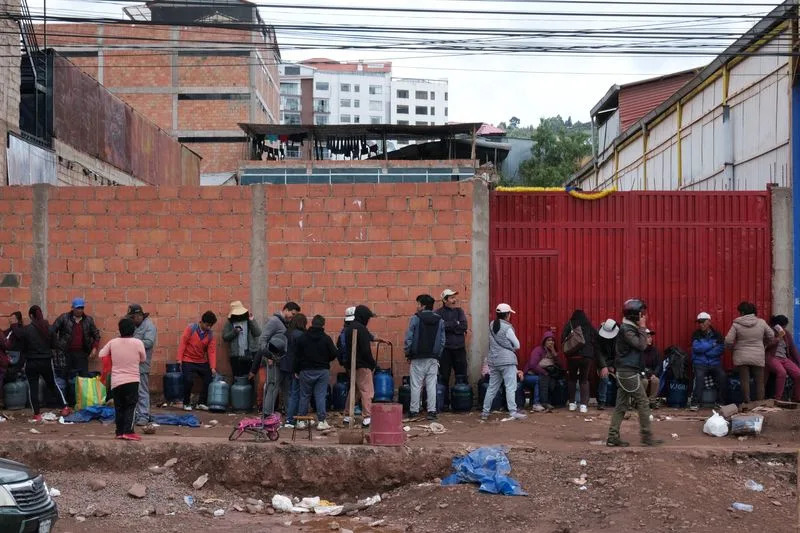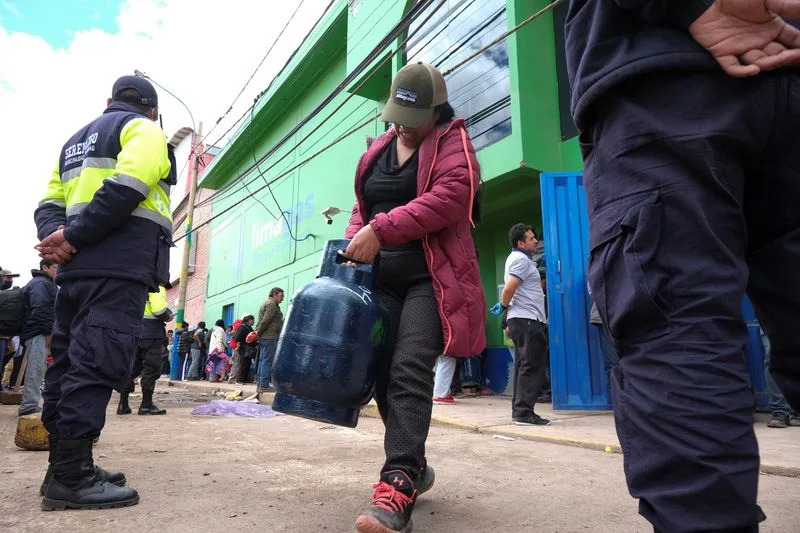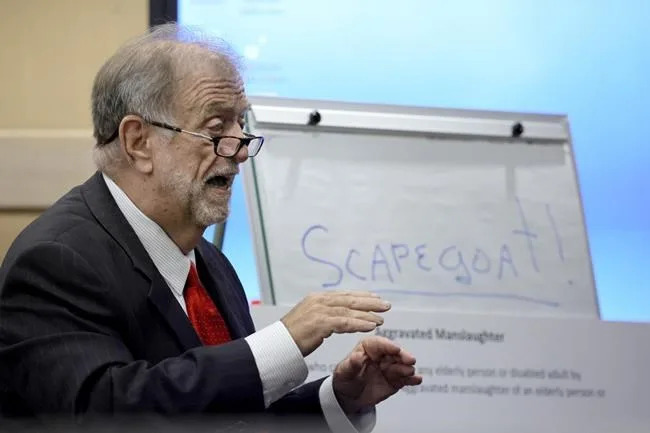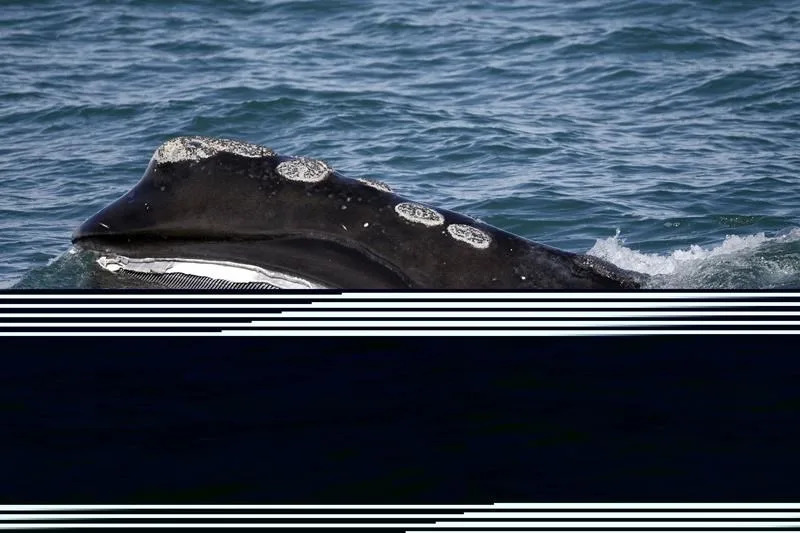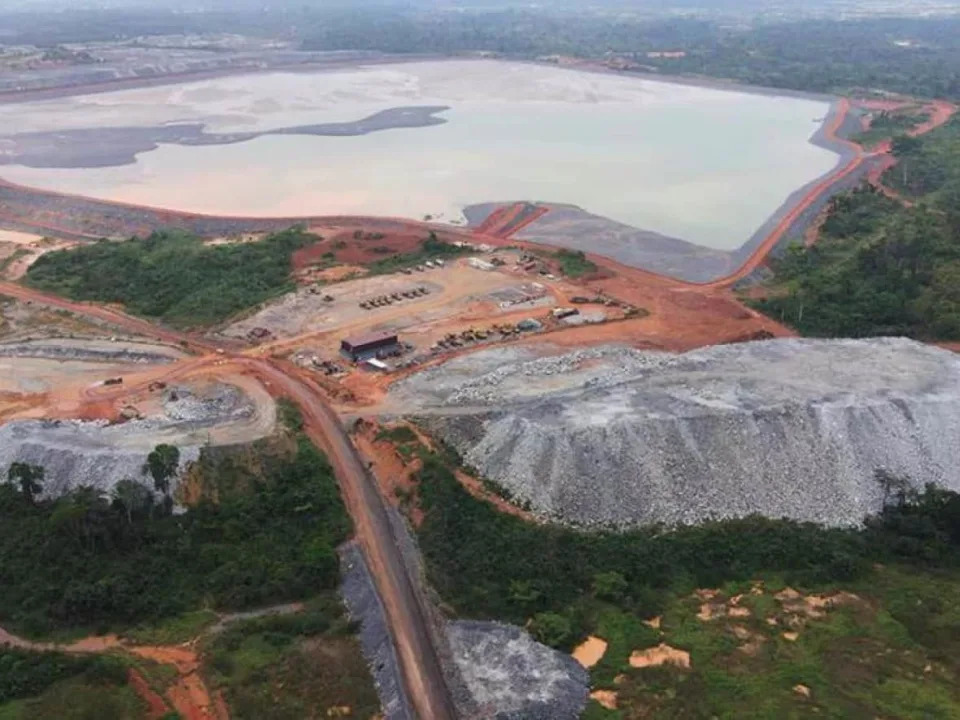FOR THE SAME REASON THEY ARE MELTING
Angela Symons
Tue, 7 February 2023

A snaking wall of solar panels has been attached to Switzerland's longest dam. The solar dam is helping the landlocked nation maximise its green energy production in the winter months.
The Lake Muttsee dam, in the central Swiss canton of Glarus, is over 7,800 feet (2,400 metres) above sea level and is surrounded by snow-capped peaks - something that the team behind the AlpinSolar project says is a key benefit.
Angela Symons
Tue, 7 February 2023

A snaking wall of solar panels has been attached to Switzerland's longest dam. The solar dam is helping the landlocked nation maximise its green energy production in the winter months.
The Lake Muttsee dam, in the central Swiss canton of Glarus, is over 7,800 feet (2,400 metres) above sea level and is surrounded by snow-capped peaks - something that the team behind the AlpinSolar project says is a key benefit.
Why are alpine solar plants so effective?
"One of the qualities of alpine solar plants is that, especially in winter, they produce up to three times more electricity than a comparable facility in the midlands," says Jeanette Schranz, communications lead for renewables at Swiss energy producer Axpo.
The dam's almost 5,000 solar panels produce 3.3 million kilowatt hours of energy per year, enough to supply around 700 houses. Installation of the panels was completed last year and production at the site has already begun.

The reflection from the snow helps solar power production at the AlpinSolar dam.
- REUTERS/Arnd Wiegmann
Schranz says Switzerland's mountains are less affected by fog in colder months, meaning the panels see more sun than they would at lower altitudes.
"The reflection from the snow also helps," Schranz says, adding that "solar panels like the cold and have a higher yield in cooler temperatures."
Sweden, Finland, Latvia: Which EU countries use the most renewable energy?
Installing solar panels on these family homes led to spare cash and more free time
Switzerland is leaning on solar in its nuclear power phaseout
AlpinSolar is part of a larger vision for Axpo, which says it aims to install 4,200 solar projects in Switzerland's mountains and lower-lying regions by 2030.
Switzerland's government is also making it easier for solar energy to become more prevalent. Last year the federal parliament amended the country's Energy Act to fast track the approval process of new solar plants that aim to produce significant levels of energy during the winter months.
Schranz says Switzerland's mountains are less affected by fog in colder months, meaning the panels see more sun than they would at lower altitudes.
"The reflection from the snow also helps," Schranz says, adding that "solar panels like the cold and have a higher yield in cooler temperatures."
Sweden, Finland, Latvia: Which EU countries use the most renewable energy?
Installing solar panels on these family homes led to spare cash and more free time
Switzerland is leaning on solar in its nuclear power phaseout
AlpinSolar is part of a larger vision for Axpo, which says it aims to install 4,200 solar projects in Switzerland's mountains and lower-lying regions by 2030.
Switzerland's government is also making it easier for solar energy to become more prevalent. Last year the federal parliament amended the country's Energy Act to fast track the approval process of new solar plants that aim to produce significant levels of energy during the winter months.

Solar power is an important part of Switzerland's green energy transition.
- REUTERS/Arnd Wiegmann
The country's drive towards more green means of energy production is tied to its decision to phase out nuclear power. In June 2011 parliament resolved not to replace any existing reactors, which was confirmed in a 2017 referendum.
Schranz says a balanced power mix is key to Switzerland achieving the transition to green energy. “Alpine solar plants can also make an important contribution here.”
The country's drive towards more green means of energy production is tied to its decision to phase out nuclear power. In June 2011 parliament resolved not to replace any existing reactors, which was confirmed in a 2017 referendum.
Schranz says a balanced power mix is key to Switzerland achieving the transition to green energy. “Alpine solar plants can also make an important contribution here.”
Study: 15 million people live under threat of glacial floods
Tue, February 7, 2023

As glaciers melt and pour massive amounts of water into nearby lakes, 15 million people across the globe live under the threat of a sudden and deadly outburst flood, a new study finds.
More than half of those living in the shadow of the disaster called glacial lake outburst floods are in just four countries: India, Pakistan, Peru and China, according to a study in Tuesday’s Nature Communications. A second study, awaiting publication in a peer-reviewed journal, catalogs more than 150 glacial flood outbursts in history and recent times.
It's a threat Americans and Europeans rarely think about, but 1 million people live within just 6 miles (10 kilometers) of potentially unstable glacial-fed lakes, the study calculated.
One of the more devastating floods was in Peru in 1941 and it killed between 1,800 and 6,000 people. A 2020 glacial lake outburst flood in British Columbia, Canada, caused a tsunami of water about 330 feet (100 meters) high, but no one was hurt. A 2017 glacial outburst flood in Nepal, triggered by a landslide, was captured on video by German climbers. Alaska’s Mendenhall glacier has had annual small glacial outburst floods in what the National Weather Service calls “suicide basin,” since 2011, according to study lead author Caroline Taylor, a researcher at Newcastle University in the United Kingdom.
Heavy rains and a glacial lake outburst flood combined in 2013 in India to kill thousands of people. A 2021 deadly flood in India that was initially attributed to a glacial lake outburst wasn’t caused by one, studies later found.
Scientists say so far it doesn’t seem like climate change has made those floods more frequent, but as glaciers shrink with warming, the amount of water in the lakes grows, making them more dangerous in those rare situations when dams burst.
“We had glacier lake outburst floods in the past that have killed many many thousands of people in a single catastrophic flooding event,” said study co-author Tom Robinson, a disaster risk scientist at the University of Canterbury in New Zealand. “And with climate change glaciers are melting so these lakes are getting bigger, potentially getting more unstable.”
Dan Shugar, a geoscientist at the University of Calgary who wasn't part of the two studies, said much of the threat depends simply on how many people live in a glacial flood zone.
“In a warming world we certainly expect more and larger glacial lakes,” Shugar said in an email. “But the threat that these lakes might pose critically depends on where people are living and what their vulnerabilities might be."
Robinson said what’s different about his study is that it’s the first to look at the climate, geography, population, vulnerability and all these factors to get “a good overview of where in the world is the most dangerous places'' for all 1,089 glacial basins.
At the top of the list is Khyber Pakhtunkhwa basin in Pakistan, north of Islamabad.
“That’s particularly bad,” Robinson said. “Lots of people and they’re very, very vulnerable” because they live in a valley below the lake.
The trouble is that scientists are focusing too much attention on the Pakistan, India, China and the Himalayas, often called High Mountain Asia, and somewhat ignoring the Andes, Robinson said. The second and third highest risk basins are in Peru's Santa basin, and Bolivia's Beni basin, the paper said.
After the deadly Andes flood in the 1940s that region “was sort of a leader” in working on glacial flood outburst threats, but in the last decade or so, High Mountain Asia has taken over because of the high population, said University of Dayton geology professor Umesh Haritashya, who wasn’t part of the studies.
India ranks high in the threat list not so much because of the physical setup but because of “a huge number of people downstream.”
Three lake basins in the United States and Canada rank high for threats, from the Pacific Northwest to Alaska, but aren’t nearly as high as areas in Asia and the Andes with few people in the danger zone. They are in Alaska's Kenai Peninsula — distinct from the Mendenhall glacier near Juneau — northeast Washington and west central British Columbia.
“This ranking is a good checklist for further research,” said Oliver Korup of the University of Potsdam in Germany, who co-authored the list of glacial lake outburst floods.
___
Follow AP’s climate and environment coverage at https://apnews.com/hub/climate-and-environment
___
Follow Seth Borenstein on Twitter at @borenbears
___
Associated Press climate and environmental coverage receives support from several private foundations. See more about AP’s climate initiative here. The AP is solely responsible for all content.
Seth Borenstein, The Associated Press
Tue, February 7, 2023

As glaciers melt and pour massive amounts of water into nearby lakes, 15 million people across the globe live under the threat of a sudden and deadly outburst flood, a new study finds.
More than half of those living in the shadow of the disaster called glacial lake outburst floods are in just four countries: India, Pakistan, Peru and China, according to a study in Tuesday’s Nature Communications. A second study, awaiting publication in a peer-reviewed journal, catalogs more than 150 glacial flood outbursts in history and recent times.
It's a threat Americans and Europeans rarely think about, but 1 million people live within just 6 miles (10 kilometers) of potentially unstable glacial-fed lakes, the study calculated.
One of the more devastating floods was in Peru in 1941 and it killed between 1,800 and 6,000 people. A 2020 glacial lake outburst flood in British Columbia, Canada, caused a tsunami of water about 330 feet (100 meters) high, but no one was hurt. A 2017 glacial outburst flood in Nepal, triggered by a landslide, was captured on video by German climbers. Alaska’s Mendenhall glacier has had annual small glacial outburst floods in what the National Weather Service calls “suicide basin,” since 2011, according to study lead author Caroline Taylor, a researcher at Newcastle University in the United Kingdom.
Heavy rains and a glacial lake outburst flood combined in 2013 in India to kill thousands of people. A 2021 deadly flood in India that was initially attributed to a glacial lake outburst wasn’t caused by one, studies later found.
Scientists say so far it doesn’t seem like climate change has made those floods more frequent, but as glaciers shrink with warming, the amount of water in the lakes grows, making them more dangerous in those rare situations when dams burst.
“We had glacier lake outburst floods in the past that have killed many many thousands of people in a single catastrophic flooding event,” said study co-author Tom Robinson, a disaster risk scientist at the University of Canterbury in New Zealand. “And with climate change glaciers are melting so these lakes are getting bigger, potentially getting more unstable.”
Dan Shugar, a geoscientist at the University of Calgary who wasn't part of the two studies, said much of the threat depends simply on how many people live in a glacial flood zone.
“In a warming world we certainly expect more and larger glacial lakes,” Shugar said in an email. “But the threat that these lakes might pose critically depends on where people are living and what their vulnerabilities might be."
Robinson said what’s different about his study is that it’s the first to look at the climate, geography, population, vulnerability and all these factors to get “a good overview of where in the world is the most dangerous places'' for all 1,089 glacial basins.
At the top of the list is Khyber Pakhtunkhwa basin in Pakistan, north of Islamabad.
“That’s particularly bad,” Robinson said. “Lots of people and they’re very, very vulnerable” because they live in a valley below the lake.
The trouble is that scientists are focusing too much attention on the Pakistan, India, China and the Himalayas, often called High Mountain Asia, and somewhat ignoring the Andes, Robinson said. The second and third highest risk basins are in Peru's Santa basin, and Bolivia's Beni basin, the paper said.
After the deadly Andes flood in the 1940s that region “was sort of a leader” in working on glacial flood outburst threats, but in the last decade or so, High Mountain Asia has taken over because of the high population, said University of Dayton geology professor Umesh Haritashya, who wasn’t part of the studies.
India ranks high in the threat list not so much because of the physical setup but because of “a huge number of people downstream.”
Three lake basins in the United States and Canada rank high for threats, from the Pacific Northwest to Alaska, but aren’t nearly as high as areas in Asia and the Andes with few people in the danger zone. They are in Alaska's Kenai Peninsula — distinct from the Mendenhall glacier near Juneau — northeast Washington and west central British Columbia.
“This ranking is a good checklist for further research,” said Oliver Korup of the University of Potsdam in Germany, who co-authored the list of glacial lake outburst floods.
___
Follow AP’s climate and environment coverage at https://apnews.com/hub/climate-and-environment
___
Follow Seth Borenstein on Twitter at @borenbears
___
Associated Press climate and environmental coverage receives support from several private foundations. See more about AP’s climate initiative here. The AP is solely responsible for all content.
Seth Borenstein, The Associated Press


